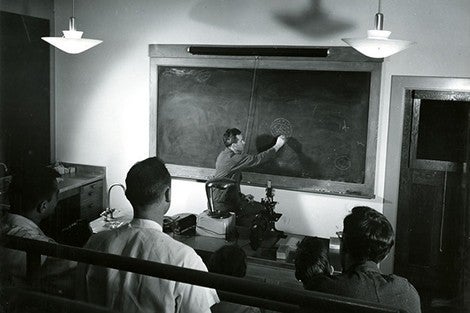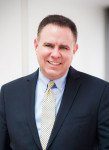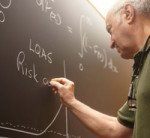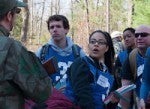Education unbound
How has public health education evolved in the last 100 years? Where is it headed in the future? Six Harvard School of Public Health faculty deeply involved in the revolution now taking place in public health education offer their perspectives.
Q. HSPH has been teaching students for 100 years. How are the School’s teaching methods different today from a century ago?
Ian Lapp: If the School’s three founders were to stroll around the campus today, probably the only thing they would recognize is the classroom—and with our new online learning platforms, even that feature is being transformed.
James Ware: There’s interesting neuroscience that suggests that the way we learn is changing. Whereas we used to accumulate a body of facts, with the Internet’s availability, we can now accumulate a body of learning skills. Memorizing a bunch of facts isn’t that helpful. What you really need are strategies for acquiring and organizing and using the information you need, at the time you need it. The actual facts we teach people are very transient. What we hope is that we’re creating a foundation.
Nancy Turnbull: We’ve had a revolution in our understanding of how people learn—in particular, how adults learn—which suggests that many of the traditional modes of education simply aren’t effective. If you’ve been given a lecture, after a week or so or maybe even a day, you retain only 5 percent of what you’ve learned. If you read, your retention isn’t high. But the more actively things happen—if content is demonstrated, if you’ve had discussion groups, if you actually do something—there’s lots more active learning. In the future, we’ll see lots more problem solving in the classroom, more case-based learning, more experiential learning. We’ll move students out in the field much more, taking what they’re learning, working in small groups to actually help organizations solve problems that they’re facing.
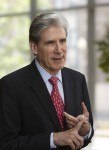 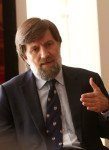 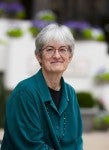 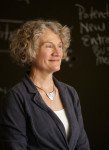 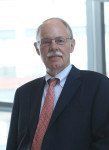
|
Nancy Kane: There are wonderful things faculty can do: team teaching, case-based methods, simulations, games. But teaching in these ways takes real time and effort. It’s just as hard as running a research project.
Julio Frenk: We’ve tended to construe higher education as a tube that has an opening on one end—admissions—and an opening on the other end—graduation. And we assume that something good happens to students when they are inside the tube. But we need more open architecture, where people come into and out of educational institutions during their entire lifetimes.
Q.What are the hallmarks of an HSPH education?
Nancy Turnbull: Students and faculty are firmly rooted in the idea of using knowledge to make positive change in the world. Our faculty are, to a person, both thinkers and doers. And students come here because they want to learn from the people who are actually creating the knowledge.
Ian Lapp: HSPH has always had a reputation for an impressively well-rounded curriculum. As our educational strategy is evolving in the 21st century, we’re formalizing that model and giving it additional emphasis. We want to graduate students with “T-shaped” competencies—meaning, deep knowledge in one area of specialty, but also the breadth of knowledge—the top of the “T”—to reach out to other disciplines, other fields of inquiry. In an increasingly complex and interdependent world, public health professionals must have this kind of well-grounded but flexible orientation.
Julio Frenk: This is a school that truly encompasses everything from genes to the globe. It’s a microcosm of a university, because other than the pure humanities and the arts, you have every field of inquiry: biologists, chemists, physicists, social scientists, legal scholars, ethicists, and, of course, health professionals. And there’s this pioneering spirit at the school. A lot of new fields were invented here. The current comprehensive review of our educational strategy that’s under way keeps alive this tradition of exploring new frontiers in education. We want to bring to education the same rigorous assessment and evidence base that we bring to research.
Q. Is the content of an HSPH education changing?
Nancy Kane: For the past 20 years or so, public health has been taught in five silos: Biostatistics, Epidemiology, Environmental Health, Health and Social Behavior, Health Policy and Management. It was up to the student to take this knowledge base and translate it into a problem-solving mode. Here’s a classic example: You run a malarial control unit in Uganda, in a province with terrible endemic malaria. You have money from the U.S. government, funds to eliminate malaria by spraying with DDT and handing out bed nets and doing the other things. But there are problems. The population doesn’t trust the government because of the history of violence in that country. Organic farming is big in that province, and once you spray DDT, the farmers go out of business. There are inadequate resources to do the DDT spraying correctly. Residents worry about what DDT does to human health and the environment. And bed nets are not always comfortable to use. This situation brings in environment, policy issues of how to make decisions, political and communication issues that come from a history of tribal distrust. This is the reality of public health interventions—and students need to be prepared to adapt to difficult scenarios that are constantly in flux.
Ian Lapp: For most of its history, public health education has been discipline-bound. So now we’re seeking to recast the core curriculum. For example, it makes sense to teach biostatistics and epidemiology together, in the same room or online arena—because that’s how these subjects play out in real life. When you’re an epidemiologist, you can analyze and perhaps draw a conclusion from data only if you know the strengths and weaknesses of the study design.
Q. Are online learning platforms, such as HarvardX, also revolutionizing the way students learn?
HarvardX marks the spot
When Harvard University and MIT launched the digital platform edX in 2012, they began with just two courses. One of these historic offerings was Harvard School of Public Health’s class in epidemiology and biostatistics, which drew more than 50,000 students around the world, some 5,000 of whom went on to pass the final examination. “I’d have to teach another 100 years to reach that many students in person,” marveled Marcello Pagano, professor of statistical computing and one of the instructors for Health in Numbers: Quantitative Methods in Clinical and Public Health Research—which, like all edX courses to date, was offered free to anyone with an Internet connection. |
David Hunter: Dramatically. With wider bandwidth in broadband connections available in much of the world, it is now possible to make high-resolution live or filmed video without the image being jerky or taking time to download. So, at its simplest level, lecture-style classes can be offered online to thousands of people all over the world at low cost. We’re very optimistic that these new technologies will also improve the education that students get in person. In theory, at least, the technology-intensive nature of HarvardX enables us to identify struggling students more quickly, and to distinguish between the more and less engaged students. For our residential students, we are introducing this fall Bio 200, one of the introductory biostatistics courses, as a “flipped” classroom. Instead of standard lectures in front of a big class, the lectures are online. Students watch those in the evenings instead of doing homework, and then they participate in a much more active learning style in the classroom when the lectures would normally have been given. Another flipped classroom will be the blended biostatistics and-epidemiology introductory course.
Q. Do these new technologies give the School greater global reach?
Ian Lapp: Nearly every week, we receive requests from institutions around the world for help in teaching students the basics of public health. By developing HarvardX courses that our colleagues can incorporate in their curricula, we are helping improve the breadth and depth of content that can be offered worldwide.
David Hunter: In public health, we want to get the word out to the most people possible. Our involvement in HarvardX is substantially about getting our core public health messages and methods to the widest possible global audience.
Q. In public health education, is there a tension between research and practice—the ivory tower and the community?
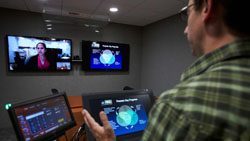
Nancy Kane: It’s not so much a tension within the institution—it’s a tension within the educational profession. Some schools are much more practice-focused and tied in to the county or state health department—their students intern as epidemiologists or food inspectors. Our school has always focused more on research and developing a new knowledge base. Research universities tend to be stronger at developing the research to inform the practice, rather than training people in the practice. Of course, public health needs both.
Julio Frenk: I think it’s a false dichotomy. The world of ideas and the world of action are not separate, as we are often led to believe. Producing and preserving knowledge, making sure that we understand the past so that we can shape the present and the future: That, to me, gets us past ivory tower versus activist models of the university. I like to think more in terms of a circle of knowledge. At HSPH, we have a single product—knowledge—and an integrated process around knowledge. That includes the production of knowledge, which is done mostly through research. It includes the re-creation of knowledge through education, because good education doesn’t only transmit knowledge, it re-creates it in the mind of the next generation. It includes the translation of knowledge. One form of translation is into new technologies, such as drugs, vaccines, software. Another type of translation is into evidence that guides decision making and action. With action, the world is changed. We then ask new questions, because the world has changed. Closing the circle, we’re back into the production of knowledge.
James Ware: We try to do good in the world. And occasionally, someone like a Jonathan Mann, the passionate advocate for human rights, or Alice Hamilton, the pioneer in exposing occupational hazards, comes along—someone who really does take on the villains. That reinforces that notion that we’re championing the public good. So I don’t think of it as research versus practice. When you see how politics works, for example, you realize you have to be practical. If you want to get people vaccinated, you’ve got to figure out how to do it. It’s not enough to say, “Everybody should be vaccinated.”
Q. Does one need a missionary zeal to do public health—and can it be taught?
Humanitarian academy
Future humanitarian responders can learn valuable skills in the classroom, but they need to experience the chaos of crisis to prepare for the demands of fieldwork. HSPH fills that gap with an intensive course offered through The Lavine Family Humanitarian Studies Initiative, the flagship training and professional development program of the Humanitarian Academy at Harvard. The course culminates in a simulated humanitarian crisis held in a nearby state forest. Students work in teams to develop a refugee aid plan while contending with a host of distractions, from child soldiers to rogue journalists. The lessons are potentially lifesaving—for the students and the people they will serve. |
Julio Frenk: Becoming a public health professional starts with a fundamental dissatisfaction with the way things are. If you are a conformist, and you don’t mind a huge gap between what could be achieved with our current knowledge and what we actually achieve with our current practice, then public health is not for you. That dissatisfaction has to be cultivated, because it’s a dissatisfaction that needs to be evidence-based and value-driven.
Ian Lapp: What compels policymakers and what compels individuals to change is the human story. It isn’t good enough to be grounded in your epidemiology, biostatistics, and environmental health. If our graduates can’t figure out both the art and science of creating change, we haven’t done our jobs. This sense of public health mission also means that in the ongoing search for student talent, the School will not judge somebody only by the higher degrees they have, but by the experiences and creativity and passion that they bring to the place.
Nancy Kane: The reason I like teaching here is the idealism. HSPH students want to save the world. We have students ranging from third-year medical students, who are often passionately idealistic, to 50- to 60-year-old seasoned professionals in the public health or the health delivery system worlds, who may not be as idealistic but are still inspired by what they learn here. They go out with renewed vigor, confident that they can make the world a better place. That’s what we do. We inspire people.
Download a PDF of Transforming public health education here.
